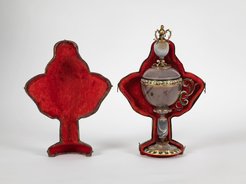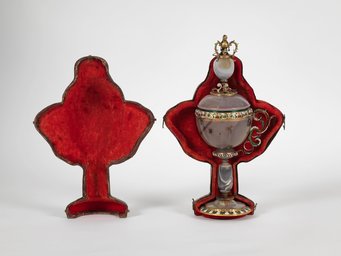Care

The concept of care is central to art history, but it is only rarely discussed. This is a surprising disjunction: many of the objects that form the history of art have survived only because care has been invested in them. Yet we know little of what that care encompassed and the reasons it was given, of who cared for objects, and of how they did so. In seeking answers to these questions, we shift focus away from restoration and treatment toward a broader set of material and immaterial practices, all aimed at securing and maintaining the well-being of objects – in a word, care.
These practices might include acts of physical or symbolic protection and repair; rites of consecration, inauguration, and restitution; as well as what we nowadays describe as preventive conservation, risk management, environment control, and boundary maintenance. Our attention therefore extends to spaces of deposit, storage, and concealment, moving away from those sites of display – the gallery, the cabinet, the studiolo – that have been the focus of much art-historical attention. In examining who gives care, to what, and for what reasons, we also seek to explore the extent to which caring practices are defined in response to the object’s endangerment, especially in times of conquest or conflict.
The Group’s research is directed at understanding not only how care was and is practiced but also how it has formed – and continues to inform – our knowledge of and access to art. It seeks to contribute to the growing contemporary discourse on the ethics and politics of care by making space for a longer historical analysis of these practices, articulating their differences and exposing where they come into conflict with one another.
Essential to the question of care is the figure of the curator, the term for which originates in the Latin curare (to care). We are interested in the history of curatorial practices as well as their present-day equivalents. What kinds of practitioners were responsible for collections' care in advance of the invention of the curator? What did curatorial practice consist of in advance of the art museum, and how does it compare to curatorial practices today? Fellows affiliated with the Research Group are active as curatorial fellows and guest curators and cultivate close ties with local collections. Recent collaborations include the Albright-Knox Art Gallery (now the Buffalo AKG Art Museum), Palazzo Strozzi, the Galleria Borghese, the Gallerie dell'Accademia in Venice, and the Palladio Museum. This hands-on activity informs our work as scholars and enriches our approach to our guiding questions.
Progetti in corso
Francesca Borgo, Ph.D.: Wartime Care
Helen Buddensieg, M.A.: Approaches to the Care of Correggio’s Madonna of Saint Sebastian
Julia Vázquez, Ph.D.: Five Frames and the Stories They Tell, Towards a History of the Curator
Ex membri del gruppo
Annika Svendsen Finne, M.A.: Simulation and Invention as Techniques for Fixing Paintings in Italy, ca. 1300–1500
Sarah C. Rosenthal, M.A.: Draw Your Weapons: Urs Graf and the Self-Preservation of Drawings
Oliver Wunsch, Ph.D.: Pastel and the Meaning of Delicacy in Eighteenth-Century France
Panels at Professional Conferences
Throughout the year, we bring our work outside the Hertziana to professional art history convenings (RSA, CAA, AAH, and CIHA, among others) to exchange ideas with academics, curators, artists, PhD students, and early career researchers working on related topics. At the 2023 RSA annual conference we organized two panels titled 'Renaissance Care'; these sessions looked at how people and communities in early modernity cared for objects that mattered to them. In 2024 we brought our work again to RSA and to CAA, with panels on the origins of the exhibition in the early modern period and the intersections of art and ecology in modern and contemporary art.
